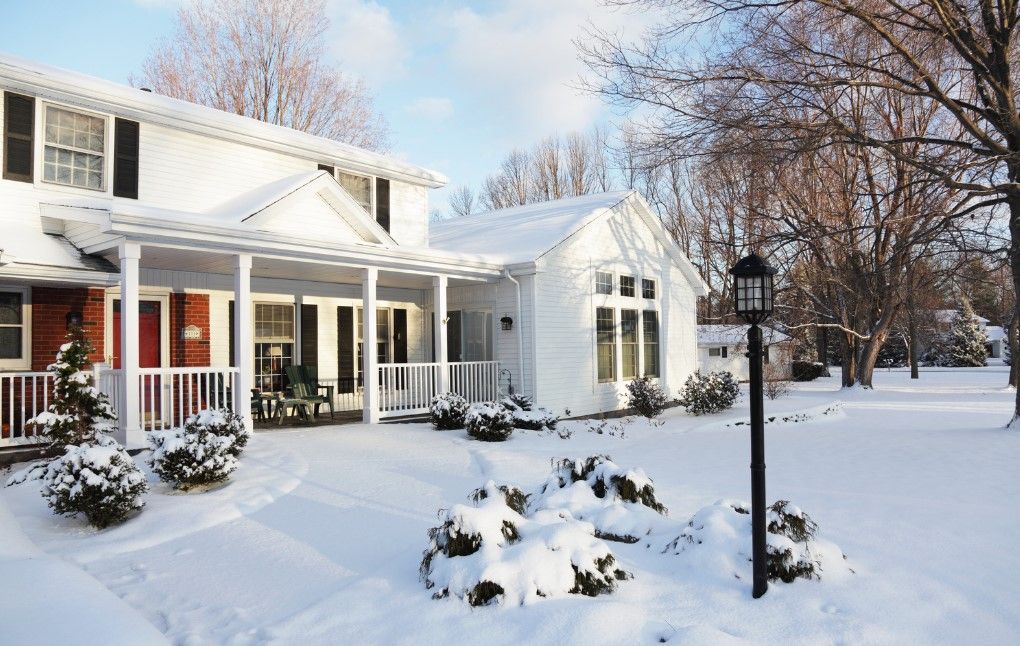What Rising Insurance Costs Mean for Home Values
In recent years, homeowners across the U.S. have been facing a growing concern: rising insurance premiums.

Whether you plan to sell your home this winter or not, here are eight key tips for preparing and weatherizing your home to survive the winter. Homeowners who perform preventative measures to their homes can even increase the values of their homes over time. Preventative measures can save you a lot of time, money and heartache.
Heating, Ventilation and Air Conditioning (HVAC) System
Have your HVAC system cleaned and checked before you turn on your furnace or heater for the first time this season. Change the filter. Dust off your registers. Every couple years, have their heating and air conditioning ducts cleaned.
Disconnect Exterior Hoses
It is extremely important to disconnect the exterior hoses around your house. Also, disconnect the hose in your garage if you have one there. This will prevent the water left in the hose and pipes from freezing, expanding and bursting your interior pipes. Burst pipes are the worst. Your home value is at stake here. If water inside a pipe freezes, and the pipe inside your home bursts, you will have extensive water damage to clean up. You may need to repair or replace flooring, drywall and more. It can be very expensive to clean up. It can also be dangerous if mold starts to grow from improper cleanup.
Clear Debris
Start at the top of your house and clean off the top of your roof. A soft power washing is sufficient. Then move down and clean the debris out of your gutters, downspouts and window wells. This includes dirt, rocks, leaves, sticks and the like. Also clean off the tops of the storm drains around your home.
Landscaping
Mow your lawn one last time in cold weather areas. Clean weeds and dead annuals out of your landscaping beds. Put down a fresh layer of mulch to protect perennials, bushes and trees from cold weather. Trim bushes and trees away from your siding and roof to prevent any possible damage. For example, you do not want a tree limb freezing, breaking and falling on your roof.
Insulate Pipes
Be sure your pipes are insulated in areas where the weather gets down to freezing temperatures. You can find insulation wrap for your exterior pipes and the pipes in your garage. If it gets too cold, you can insulate your kitchen and bathroom pipes that are on the exterior walls of your home. Be sure to insulate the pipes in your crawl space and attic.
Clean Your Exhaust Duct
The fall is a good time to clean your clothes dryer exhaust duct and damper. You want to be sure it is free from lint. Also, clean under your dryer to be sure there isn't lint and dust build-up. Air needs to flow underneath the dryer. Performing this cleaning can prevent a fire.
Caulk Around Doors and Windows
If your windows and doors are older or have any gaps where air gets in, put a fresh layer of caulk around them. This will reduce heat loss and save on electricity bills. It can also extend the life of your windows and doors. A house with problem-free windows and door also has higher home value when you sell your home.
Put Away Your Porch, Patio and Deck Furniture
If you have room in a garage or a shed, it is best to place your porch, patio and deck furniture in a sheltered area. This is especially true for glass tables if you live in an area where the temperatures freeze. You do not want the glass to break from the cold. Metal furniture can rust from the elements. Wood furniture can rot. If you have weather-proof outdoor furniture, at least cover it with outdoor furniture covers. If you have an umbrella, take it down so it doesn't get caught by the wind.
An informative article on farmersalmanac.com, 11 Smart Ways to Prepare Your Home For Winter, shares, "A little preparing now goes a long way for a cozy warm home this winter." If you prepare your home, you will have more peace of mind as well.